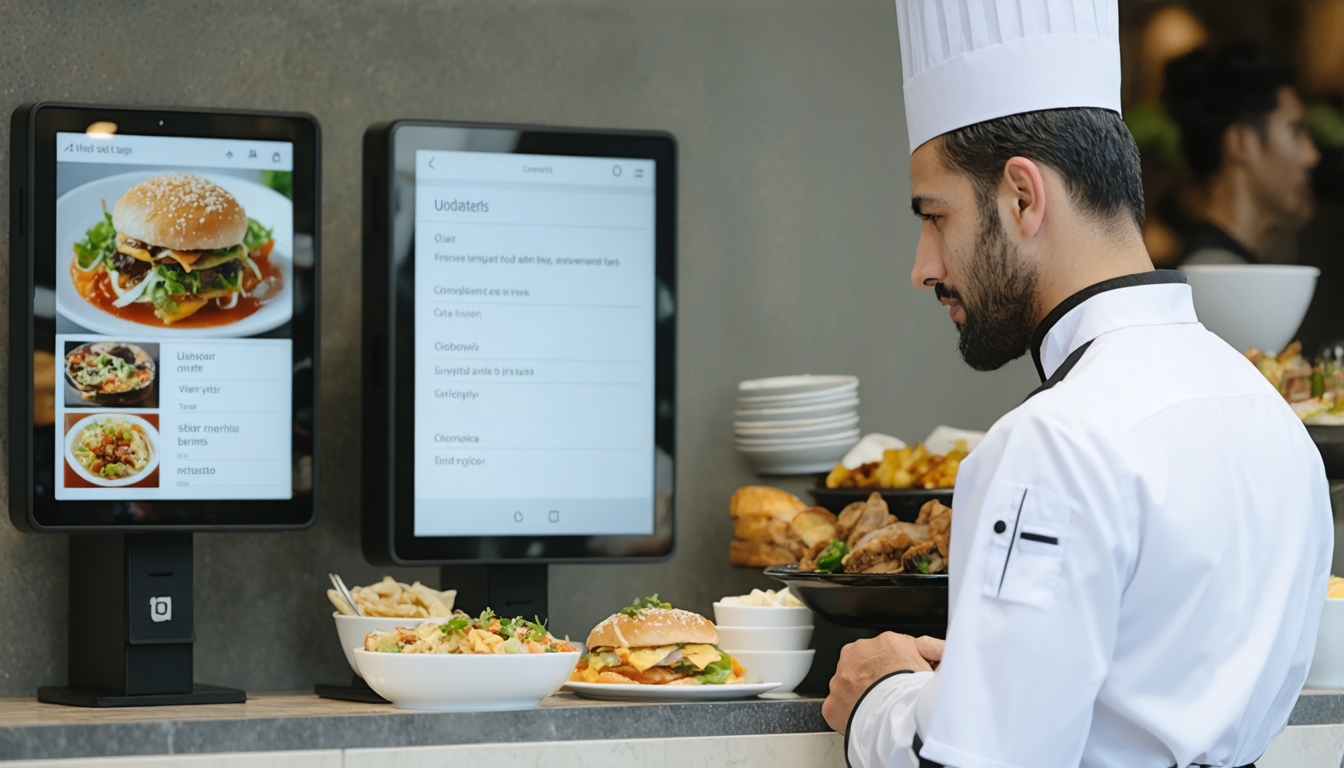- 1. Introduction: Understanding Cyber Risks in the Restaurant Industry
- 2. Defining Cyber Liability Insurance
- 3. Assessing Digital Vulnerabilities in Restaurant Operations
- 4. The Financial Impact of Cyber Attacks on Restaurants
- 5. Key Benefits of Cyber Liability Insurance for Restaurants
- 6. How Cyber Insurance Safeguards Proprietary Data and Customer Information
- 7. Integrating Cyber Insurance into a Comprehensive Risk Management Strategy
- 8. Case Studies: Real-World Examples of Cyber Attacks on Restaurants
- 9. Evaluating Cyber Liability Insurance Policies: What to Look For
- 10. Future Trends: Cybersecurity and Insurance in the Evolving Restaurant Landscape
- Conclusion
1. Introduction: Understanding Cyber Risks in the Restaurant Industry
The restaurant industry has long been a target for cybercriminals. As restaurants embrace digital ordering, online payment systems, and cloud-based management, the number of entry points for potential cyber attacks continues to grow.
Cyber risks today can range from data breaches and ransomware incidents to sophisticated phishing schemes. For restaurant owners, understanding this digital landscape is essential to protect both customer data and operational continuity.
2. Defining Cyber Liability Insurance
Cyber liability insurance is a specialized policy that helps restaurants manage the financial and operational consequences of a data breach. It offers coverage for expenses such as legal fees, notification costs, business interruption losses, and even public relations efforts to restore confidence.
Essentially, cyber liability insurance acts as a safety net when digital vulnerabilities lead to costly disruptions.
3. Assessing Digital Vulnerabilities in Restaurant Operations
Modern restaurant operations rely on interconnected systems, making it crucial to identify weak points. Common vulnerabilities include unsecured POS systems, outdated software, weak passwords, and remote access protocols that are not properly protected.
Vulnerabilities can also arise from third-party vendors that manage online reservations or delivery services. Conducting regular security audits, investing in robust cybersecurity training for staff, and updating technology can significantly mitigate these risks.

4. The Financial Impact of Cyber Attacks on Restaurants
Cyber attacks on restaurants are not just threats to data—they also have a substantial financial impact. A successful breach can lead to immediate losses due to the theft of credit card information or customer data.
Over time, these breaches hurt a restaurant’s reputation and customer trust, potentially leading to reduced patronage. Costs also mount from regulatory fines, the expense of upgrading systems after a breach, and the potential loss of intellectual property. Overall, the financial burden of a cyber attack highlights why proactive risk management is critical for restaurant operations.
5. Key Benefits of Cyber Liability Insurance for Restaurants
One of the biggest advantages of cyber liability insurance is risk transfer. Instead of shouldering the full burden of financial losses following a cyber incident, restaurants can rely on their insurance policy to cover expenses. Other key benefits include assistance with incident response, which helps restaurants quickly address the fallout from a breach.
Policies can also provide access to cybersecurity experts who help evaluate and improve security practices. With these benefits, restaurants can continue operation during and after a cyber incident, assuring customers that their information is protected.

6. How Cyber Insurance Safeguards Proprietary Data and Customer Information
Protecting sensitive information is at the heart of cyber insurance. By covering the costs associated with data breaches, cyber insurance supports the effort to safeguard both proprietary data and customer information.
This protection is particularly vital in a sector that handles a high volume of personal data daily. In the event of an incident, the policy can fund necessary notifications to customers and regulators, cover credit monitoring services, and assist in repairing digital security measures. As a result, cyber insurance helps minimize damage to customer trust and the brand’s reputation.
7. Integrating Cyber Insurance into a Comprehensive Risk Management Strategy
Cyber insurance should not be seen as a standalone solution but rather as part of a larger risk management portfolio. A well-rounded strategy includes regular security audits, employee training programs, and investment in up-to-date technology. Restaurants should start by identifying key digital assets and the potential risks they face.
After this risk assessment, technology upgrades, firewalls, and encryption protocols can be implemented. Finally, purchasing a cyber liability insurance policy ensures that any residual risks are covered. This layered approach allows restaurants to be well-prepared and more resilient in the face of evolving digital threats.
8. Case Studies: Real-World Examples of Cyber Attacks on Restaurants
Recent case studies in the restaurant industry showcase the significant impact cyber attacks can have on operations. One notable example involved a popular chain that fell victim to ransomware. The breach not only disrupted daily operations but also led to a loss of customer trust and lengthy downtime as the IT team worked with cybersecurity specialists to remove the threat.
Another example is a data breach at an independent restaurant, where weak security measures led to unauthorized access to customer payment information. In both instances, cyber liability insurance played a critical role in mitigating the financial hardships that followed the attacks.
These examples underline the importance of proactive cybersecurity measures and the need for risk transfer through insurance.

9. Evaluating Cyber Liability Insurance Policies: What to Look For
When selecting a cyber liability insurance policy, restaurants need to carefully evaluate the specific coverage options. Key features to consider include coverage limits, exclusions, and the breadth of services offered by the insurer.
Restaurants should look for policies that provide comprehensive assistance, such as coverage for legal fees, crisis management, and data restoration expenses. It is essential to understand what is not covered; for example, some policies might exclude losses resulting from employee negligence.
Seeking advice from a trusted insurance broker or legal professional can help ensure that the selected policy aligns with the unique needs of the restaurant’s digital infrastructure.
10. Future Trends: Cybersecurity and Insurance in the Evolving Restaurant Landscape
The restaurant industry is set to see significant advancements in digital technology, which will in turn drive the evolution of cybersecurity and insurance products. As mobile ordering and smart kitchen appliances become more commonplace, more data will be generated and stored electronically. This evolution creates both opportunities and challenges.
Future cybersecurity solutions might incorporate artificial intelligence and machine learning to detect threats in real time. Similarly, insurance products will likely become more specialized, offering tailored options that match the risks of an ever-changing digital environment. Adapting to these trends ensures that restaurants remain competitive and secure in a digital-first world.
Conclusion
The growing dependence on technology means every restaurant must carefully balance innovation with robust security measures. Cyber attacks are not a matter of if, but when. Therefore, establishing a comprehensive plan that includes both proactive cybersecurity practices and a reliable cyber liability insurance policy is essential. By doing so, restaurants can handle unexpected breaches, maintain customer confidence, and protect their bottom lines.
Restaurants investing in cybersecurity not only shield themselves from potential cybercriminals but also strengthen their reputation in a marketplace where trust is paramount. Educating staff about cybersecurity, investing in proper technologies, and developing an effective incident response plan are vital steps in achieving lasting digital security.
With cyber insurance, restaurants can confidently embrace the benefits of digital transformation, secure in the knowledge that they have a strong safety net ready to cover the unforeseen costs of cyber incidents.
In conclusion, integrating cyber liability insurance as part of an overall risk management strategy is a forward-thinking move for any restaurant in today’s digital age. By understanding and mitigating digital vulnerabilities, assessing the broad financial impacts of potential cyber attacks, and selecting the right insurance policy, restaurant owners can create a resilient operation.
Coupled with proactive security measures, cyber liability insurance not only safeguards digital assets but also ensures a steady delivery of quality service that customers trust.
As the digital landscape continues to change rapidly, both the threat environment and the technologies designed to counter it will evolve. Restaurants that align themselves with forward-looking cybersecurity practices and leverage the comprehensive protection offered by cyber insurance will be best positioned to thrive.
The future of restaurant operations lies in the seamless integration of innovative technology and robust risk management—ensuring continued success in an industry where every byte counts.
Embracing cyber insurance is more than just a reactive measure—it is a strategic investment in the digital future of the restaurant industry.
With real-world cases emphasizing its importance and a clear understanding of how cyber incidents can derail operations, restaurant owners now have compelling reasons to consider cyber liability insurance an essential component of their long-term business strategy.
